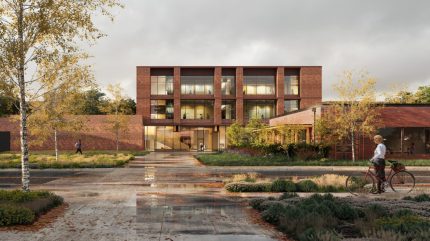
Construction has officially commenced on Jen-Hsun Huang and Lori Mills Huang Collaborative Innovation Complex at Oregon State University (OSU) in the US.
It will be developed to help bolster innovation, entrepreneurship, and industry partnerships.
Andersen Construction and design partner ZGF Architects will be a part of this project, which is expected to open in 2026.
The complex will be a three-storey, 150,000ft² centre with a supercomputer and will serve as a hub for transdisciplinary research and teaching.
The Huang Collaborative Innovation Complex is set to become the first mass timber laboratory building in the US.
The structure’s primary beams and columns are being manufactured by Freres Engineered Wood using materials from OSU’s research forests.
The complex’s design includes electrochromic glass, aligning with the university’s commitment to net-zero carbon emissions by 2025.
The facility will incorporate advanced heating, cooling, ventilation, and energy systems to minimise energy consumption, creating an optimised learning environment.
It is expected to enable faculty and students to address critical issues such as climate science, oceanography, sustainability, and water resources.
The complex will feature a cleanroom to support the semiconductor industry and an innovation lab that provides students with access to experiential learning tools.
Additionally, it will house a cyber-physical playground and an extended reality theatre.
The theatre will have a high-resolution motion-capture technology and augmented reality, to facilitate digital simulations for educational and industrial applications.
This $200m initiative comprises two $50m donations from the Wayne and Gladys Valley Foundation and OSU alumni Lori Mills Huang and Jen-Hsun Huang.



